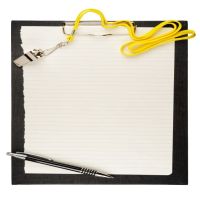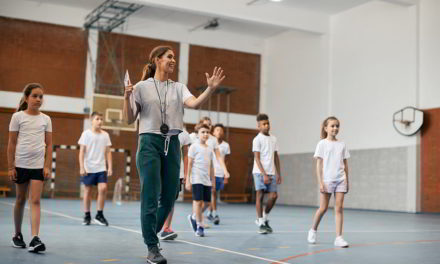This autumn, I attended a PE conference where I was both disappointed and saddened by the negativity of the comments from some PE Teachers about the new PE curriculum and the proposed new assessment of pupils without levels.
The opposition to the changes was often based on incorrect information or assumptions and it reminded me of one of my mother’s favourite sayings: ‘There are two sides to every story…and then there’s the truth.’ I truly believe in assessing students’ ability in physical education but we all have to accept that level descriptors are no more and embrace the new challenge of assessment without levels.
This is the biggest and most fundamental change to the assessment system for physical education in England and it needs to be approached with new ideas and enthusiasm.
So, with that in mind, here are the facts about the new PE national curriculum and assessment:
1. Most of the new national curriculum will come into force from September 2014. As the current curriculum was disapplied in September, ‘schools are free to develop their own curriculums for PE that best meet the needs of their pupils, in preparation for the introduction of the new national curriculum from September 2014’ (DfE, 2013).
2. The new curriculum appears to be a fusion of several previous national curriculums. It stipulates that all pupils should:
- Develop competence to excel in a broad range of physical activities
- Be physically active for sustained periods of time
- Engage in competitive sport and activities
- Lead healthy, active lives
- Know, apply and understand the matters, skills and processes specified
3. Within KS3 and KS4, pupils should be taught to:
- Use a range of tactics and strategies to overcome opponents in direct competition
- Develop their technique and improve their performance in other competitive sports
- Perform dances using advanced dance techniques within a range of dance styles and forms
- Take part in outdoor and adventurous activities which present intellectual and physical challenges and be encouraged to work in a team, building on trust and developing skills to solve problems, either individually or as a group
- Analyse and evaluate their performance and demonstrate improvement across a range of physical activities to achieve their personal best
- Take part in competitive sports and activities outside of school through community links or sports clubs
Embrace the new curriculum, because any short term pain from adapting to the new system will result in long term gain. I believe that change may prove to be a good thing for PE, provided we get it right.
So, here are my top tips for creating your own assessment policy without levels to support pupil attainment and progression:
1. As schools are now free to devise their own curriculum and assessment system, make sure it is robust and you can be proud of it. My number one tip to making it robust is to incorporate and mirror the assessment of English, Maths and Science throughout the PE curriculum. Match each strand of the core subjects and position as many different cross-curricular aspects as possible throughout the key stages. This makes the PE assessment very comprehensive and very thorough.
2. Use a cross-curricular approach. Let the students complete sample tests that incorporate English, Maths, Science, and Languages. Get an insight into other subjects and match the tests to your Physical Education tests, ensuring assessment is thorough and throughout the whole school. This will give our great subject even more scope and challenges all students.
3. Give parents meaningful information about how their child is performing. Hold review days where they can watch their children competing so they may evaluate progress.
4. Enable student to develop themselves over time and give pupils regular updates about how to improve.
5. Give regular feedback in as many different formats as possible, including constant formative feedback. Use video evidence, voice recording and podcasts of sessions and feedback so students can instantly relate back to it. Make sure that it is supportive, timely, specific, credible, infrequent, and genuine.
6. Give short knowledge, understanding and theory puzzles about tactics, skills, and different aspects of particular sports.
7. Use grades and give praise where due.
8. Show video evidence of the progress made as the pupil develops over time. Add verbal feedback alongside this.
9. Use technologies to enable the analysis and evaluation of progress through filming lessons, skills and competitive games. This can then be fed into your own department assessment.
10. Create clear expectations and criteria for each lesson so that parents, colleagues and pupils can subconsciously and consciously track, aim and meet expectations at the end of the key stage.
I feel that these new procedures will enable your facility to show the future generation the ideal pathway to progress academically, theoretically and practically within and outside of sport. I am confident that you can achieve this without ever mentioning a level!
Please let us know your thoughts, ideas and suggestions about how you are going to assess without levels in your PE department so that we can share good practice before the new curriculum has even begun.











A great blog that highlights all that is good about our subjects. I agree with your need to link with core subjects, and to assess in the same way to enable pupils and parents to understand just how much progress is being made across the school. However you mention in point 7 to use grades; are you then not assessing with levels!?! Ultimatly at the end of year 11 they will still be assessed, so why not prepare for this early. I would like to see assessment linked directly to the GCSE criteria, featuring steps for those that cannot access the marks. The first steps 1-3 for beginner / cognitive performances, then 1 – 10 as the continue to make progress. Not just a one of grade but using the methods that you have mentioned about together with ongoing support and feedback. This should make steps towards what the government is suggesting about replacing grades with numbers in the coming years, and gives a clear indication of process and comparison.
I totally agree with the comments and support the new curriculum without levels. Levels have been like shackles and never ever made any sense to me or the students. I am trialling assessing using a set of statements linked to the GCSE criteria which are more useful and initiate the use of GCSE language as soon as the students begin in Year 7. They will get a mark out of 10 as they would in GCSE. Obviously in year 7 this is likely to be low but at least it is a whole mark and not a fine grade. Lets embrace the fact we no have total autonomy!
A very helpful blog and replies thank you.I want to be brave and design assessment strategies that are helpful to my secondary and primary schools encompassing physical, social and mental development building to something that will directly helping GCSE results as well as being useful for non GCSE students but the creative juicy are not flowing or I am just not brave enough to move away from nc levels. Any advice will be gratefully accepted.